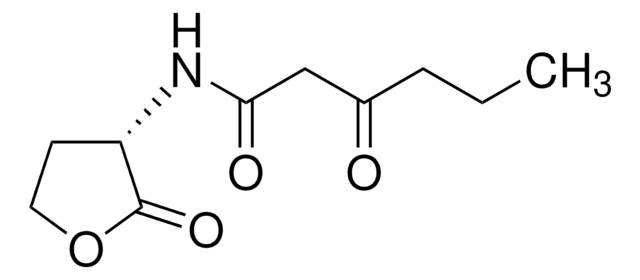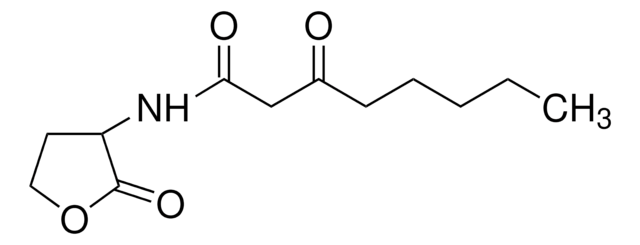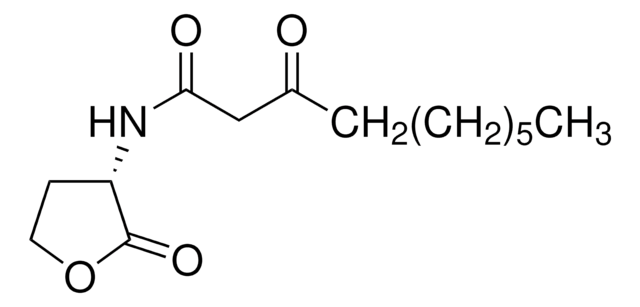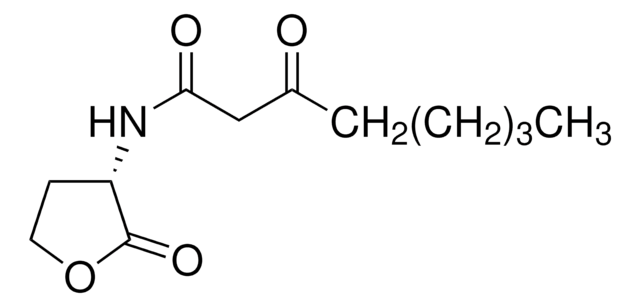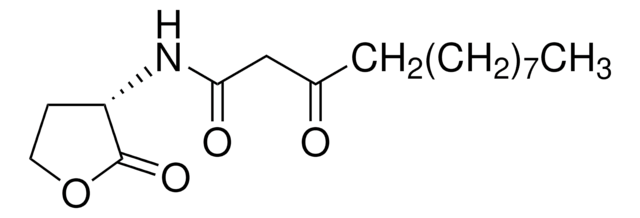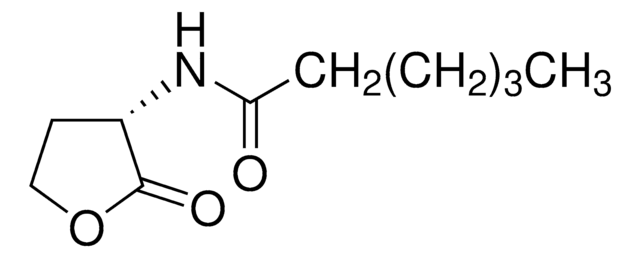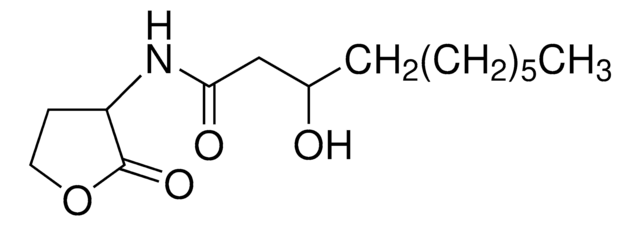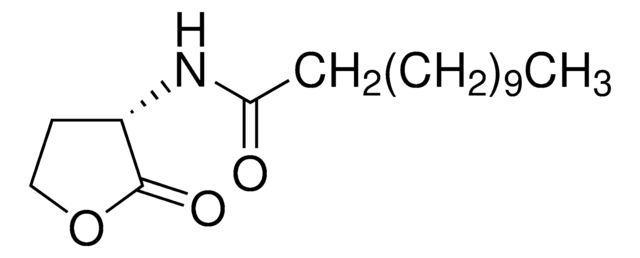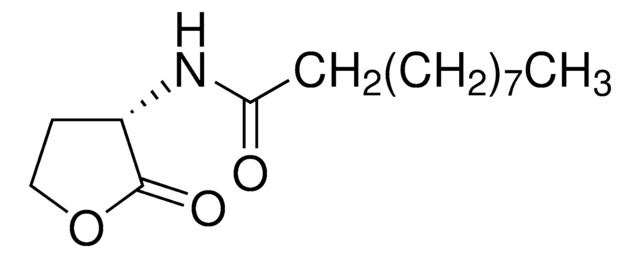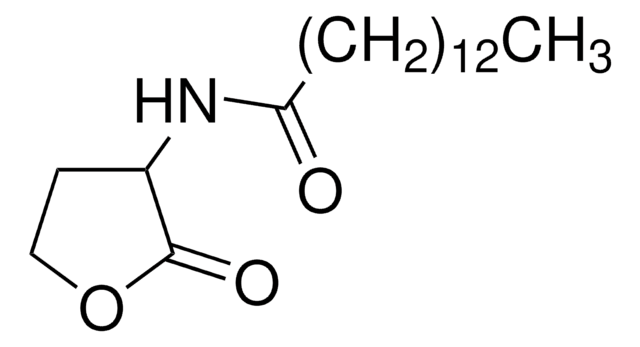61698
N-(3-Hydroxyoctanoyl)-DL-homoserine lactone
≥95% (sum of isomers, HPLC)
别名:
3-Hydroxy-N-(tetrahydro-2-oxo-3-furanyl)octanamide, 3-Hydroxy-C8-HSL, N-[(RS)-3-Hydroxyoctanoyl]-DL-homoserine lactone
登录查看公司和协议定价
所有图片(1)
About This Item
经验公式(希尔记法):
C12H21NO4
CAS号:
分子量:
243.30
MDL编号:
UNSPSC代码:
41116134
PubChem化学物质编号:
NACRES:
NA.25
推荐产品
质量水平
方案
≥95% (sum of isomers, HPLC)
储存温度
−20°C
SMILES字符串
O=C(CC(O)CCCCC)NC1C(OCC1)=O
InChI
1S/C12H21NO4/c1-2-3-4-5-9(14)8-11(15)13-10-6-7-17-12(10)16/h9-10,14H,2-8H2,1H3,(H,13,15)
InChI key
XCZVBYOXRSFQBH-UHFFFAOYSA-N
生化/生理作用
N-(3-Hydroxyoctanoyl)-DL-homoserine lactone is a member of N-acyl-homoserine lactone family. N-Acylhomoserine lactones (AHL) regulate gene expression in gram-negative bacteria, such as Echerichia and Salmonella, and are involved in quorum sensing, cell to cell communication among bacteria; for reviews see. Bacterial intercellular communication has become a target for the development of new anti-virulence drugs, and a research focus for the prevention of biofilm formation.
储存分类代码
11 - Combustible Solids
WGK
WGK 3
闪点(°F)
Not applicable
闪点(°C)
Not applicable
M R Parsek et al.
Proceedings of the National Academy of Sciences of the United States of America, 96(8), 4360-4365 (1999-04-14)
Acyl homoserine lactones (acyl-HSLs) are important intercellular signaling molecules used by many bacteria to monitor their population density in quorum-sensing control of gene expression. These signals are synthesized by members of the LuxI family of proteins. To understand the mechanism
Barbara Thallinger et al.
Biotechnology journal, 8(1), 97-109 (2013-01-03)
With the increasing prevalence of antibiotic resistance, antimicrobial enzymes aimed at the disruption of bacterial cellular machinery and biofilm formation are under intense investigation. Several enzyme-based products have already been commercialized for application in the healthcare, food and biomedical industries.
Regulation of gene expression by cell-to-cell communication: acyl-homoserine lactone quorum sensing.
C Fuqua et al.
Annual review of genetics, 35, 439-468 (2001-11-09)
Quorum sensing is an example of community behavior prevalent among diverse bacterial species. The term "quorum sensing" describes the ability of a microorganism to perceive and respond to microbial population density, usually relying on the production and subsequent response to
Margrith E Mattmann et al.
The Journal of organic chemistry, 75(20), 6737-6746 (2010-08-03)
Bacteria use small molecule signals to access their local population densities in a process called quorum sensing (QS). Once a threshold signal concentration is reached, and therefore a certain number of bacteria have assembled, bacteria use QS to change gene
Dilani Senadheera et al.
Advances in experimental medicine and biology, 631, 178-188 (2008-09-17)
Streptococcus mutans is the primary causative agent involved in dental caries in humans. Among important virulence factors of this pathogen, its ability to form and sustain a polysaccharide-encased biofilm (commonly called dental plaque) is vital not only to its survival
我们的科学家团队拥有各种研究领域经验,包括生命科学、材料科学、化学合成、色谱、分析及许多其他领域.
联系技术服务部门